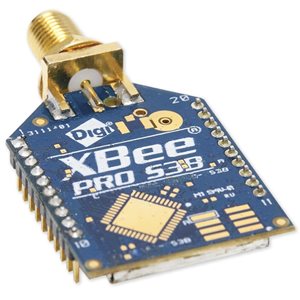We just built a "little house on the prairie"; actually a summer house that will sit unoccupied for most of the year. I would like to monitor the state of a few analog parameters in the house (temperatures, voltages, currents), and some binary bits (pump running or not, alarm on/off, etc) via the internet. I can handle getting the signals conditioned to nominal 0-5V levels, getting them into an A/D converter (like in an Arduino, for example), and writing code to trip alarms if something is too high or too low, but don't know how to make the data accessible via the internet.
First, presently, I do not have internet at the house, but do have a wifi signal from my brother-in-law's modem across the street. He subscribes to a system called "Rural Internet", which is a rooftop antenna pointing at a tower about 15mi distant. He gets moderate download speeds (better than DSL on twisted-pair telephone), but it is nothing like the speeds that folks that live in big cities get. He could give me Internet access on his account. (It might cost me)...
Alternatively, I could subscribe to the same service, in which case I would get a modem that has four network ports with a local Wifi (a router). Now start the questions:
How would an Arduino with an ESP-8226 play into that scenario? Presumably, it connects to the WiFi, but then what.? Does the ESP-8226 have a "web page" interface that I can call up over the Internet where I can see the numbers? Does it have a "static" url address? How do I find it (url?)?
Do I have to create the web page layout? How is that done?
Alternatively, can I set it up to send me a daily email containing a history, or an immediate email if something goes wrong (the decision of "ok" vs "something wrong" being done locally by, say, an Arduino)?
Is there an easier way? Rasberry Pi, etc?
Help me get started with this...
Thanks
First, presently, I do not have internet at the house, but do have a wifi signal from my brother-in-law's modem across the street. He subscribes to a system called "Rural Internet", which is a rooftop antenna pointing at a tower about 15mi distant. He gets moderate download speeds (better than DSL on twisted-pair telephone), but it is nothing like the speeds that folks that live in big cities get. He could give me Internet access on his account. (It might cost me)...
Alternatively, I could subscribe to the same service, in which case I would get a modem that has four network ports with a local Wifi (a router). Now start the questions:
How would an Arduino with an ESP-8226 play into that scenario? Presumably, it connects to the WiFi, but then what.? Does the ESP-8226 have a "web page" interface that I can call up over the Internet where I can see the numbers? Does it have a "static" url address? How do I find it (url?)?
Do I have to create the web page layout? How is that done?
Alternatively, can I set it up to send me a daily email containing a history, or an immediate email if something goes wrong (the decision of "ok" vs "something wrong" being done locally by, say, an Arduino)?
Is there an easier way? Rasberry Pi, etc?
Help me get started with this...
Thanks
Last edited:


